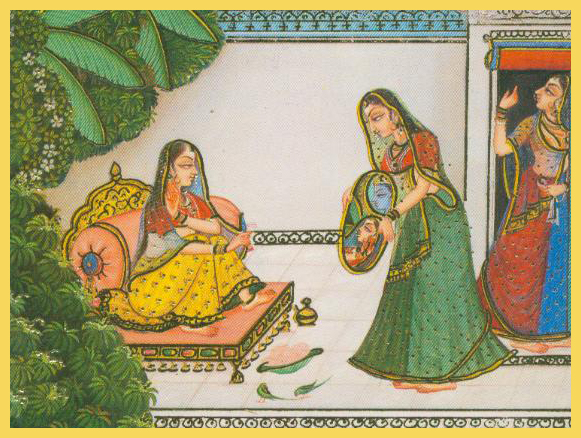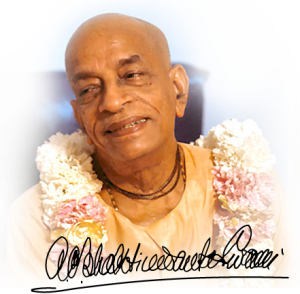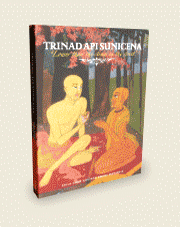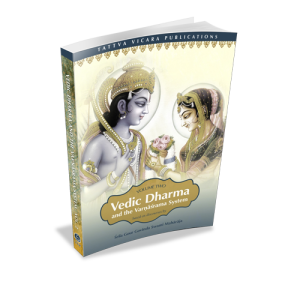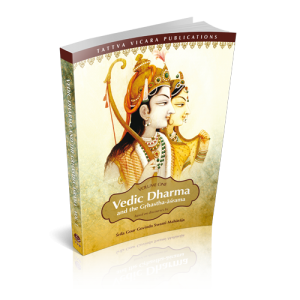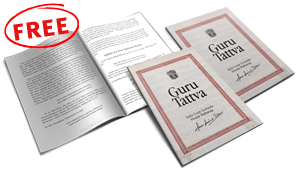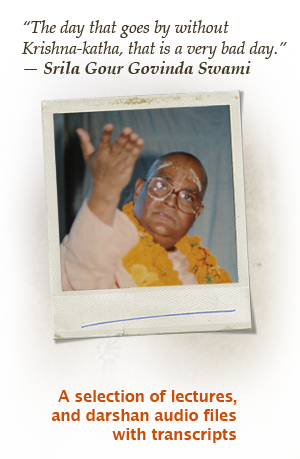How Can Krishna See His Beauty?
Vṛndāvane ‘aprākṛta navīna madana’ (Cc. Madhya 8.138) – He is always fresh and young, the transcendental spiritual Cupid in Vṛndāvana, ever fresh and new. Any time you will see Him He is new, newer. He never grows old. He is ever fresh, nityaṁ nava-navāya-mānam, ever newer, newer and newer. So beautiful is Kṛṣṇa.
Kṛṣṇa thinks, “What is My beauty?” How can He understand what His beauty is? Can you see your own face? You see the face of others, but you can’t see your own face. Before a mirror you can see it, but that is the reflection. A mirror reflects. You only see the reflection. How can Kṛṣṇa see His beauty? What mirror is required?
Sat-prema-hṛdaya-darpaṇa; hṛdaya, the heart is a mirror, sat-prema-hṛdaya. Who has developed sat-prema, pure love, completely pure love, whose heart is completely (filled with) pure love, that is a mirror. That is a premi-bhakta. In that mirror Kṛṣṇa sees His form. That is not a reflection. In a mirror you see the reflection. But, sat-prema-hṛdaya-darpaṇa, the heart of a premi-bhakta is a mirror. That is sat-prema-darpaṇa, mirror of pure love. There, Kṛṣṇa sees Himself. That is not a reflection, it is bimba. In Sanskrit reflection is called pratibimba. Prati is an upasarga. Are you a student of Sanskrit grammar? Upasarga means prefix. In English you may say prefix. Twenty-one upasargās are there: pra-, parā-, apa-, sam-, anu-, ava-, niḥ-, duḥ-, vi-, ā-, ni-, adhi-, api-, ati-, su-, ut-, abhi-, prati-, pari-, upa-. I was a teacher. I know. I was teaching all these things. Yes.
So prati- is one of the twenty-one upasargās. Bimba – pratibimba. Pratibimba in English means reflection. Kṛṣṇa never sees pratibimba. Kṛṣṇa sees bimba, His own self. No prati. Prati is cut off. That is sat-prema-darpaṇa. The heart of a premi-bhakta is such a mirror where Kṛṣṇa sees Himself and the best mirror is Radharani’s heart.
(Excerpt of a lecture by His Divine Grace Śrīla Gour Govinda Swami at an Evening Program on the 17th July, 1995 Coventry, UK)
